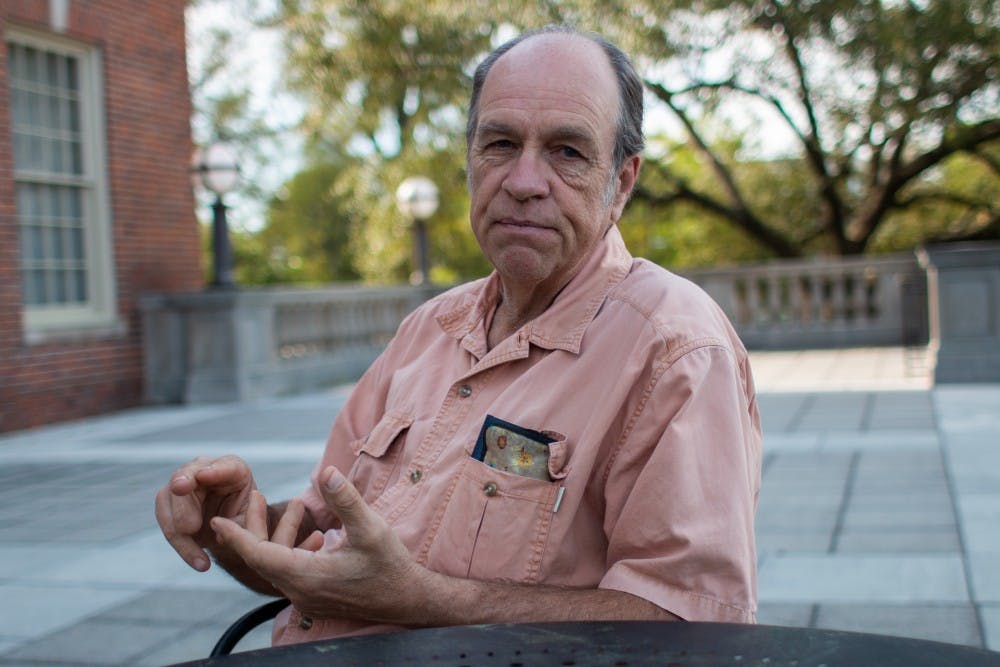Last month, Duke refused to sign necessary agreements to continue the project due to concerns including electromagnetic interference with Duke Hospital and the Duke Eye Center. Durham business leaders had also expressed concerns about the downtown route.
Marcoplos said Duke officials were in frequent communication with GoTriangle throughout the duration of the project and had previously expressed support.
“Then, at the very last minute, they flipped on all that stuff,” he said. “Strange, right?”
Shortly after the FTA met with GoTriangle to conduct its final risk assessment and evaluate potential cost overruns, the federal government was partially shut down for two months. Marcoplos said this was another serious setback for the DOLRT.
“We expected to have the contingency figure available in early January,” he said. “Instead, it took two months before we got it. That was a very valuable two months in the process to meet the arbitrary deadline of the General Assembly.”
Marcoplos said when the FTA returned with the contingency figure, it was higher than GoTriangle anticipated. This meant Orange and Durham counties had to figure out how to cover the increasing costs within the restrictions of their own budgets.
“All of those things put together made us realize that we just couldn’t do it,” he said. “Almost every factor was unnecessary in so many ways.”
Bonnie Hauser, spokesperson for Affordable Transit for All, said the light rail would never have solved the congestion problems plaguing the Triangle. She blamed the project's failure on GoTriangle for not properly addressing the project’s serious logistical problems, namely downtown Durham business leaders and Duke.
“We can blame Duke today, but I think our problems started back three years ago,” she said.
Looking forward
Damon Seils, Carrboro Board of Alderman member and chairperson of the Durham-Chapel Hill-Carrboro Metropolitan Planning Organization, said the end of the DOLRT project was a disappointment for the entire region. Both counties will need to amend their transit plans, he said.
While bus rapid transit is another option, Seils said previous studies of the Durham-Orange corridor led to the decision to pursue light rail.
To get the day's news and headlines in your inbox each morning, sign up for our email newsletters.
“We have some opportunities to make some new decisions about local investments,” he said. “But I think primarily we need to be thinking about what does our regional plan look like now that light rail is no longer a possibility.”
The money from the sales tax will continue to fund public transit in the region.
"We still have needs and we have future needs," Marcoplos said. "So I think that transit tax is going to continue to help us meet the transportation challenges of the future as well."
For future transit initiatives, Hauser said planning should focus on identifying where growth is occurring and increasing ridership, as opposed to chasing technology like the light rail. One potential project is the Wake-Durham Commuter Rail Transit plan, which plans to use existing railroad tracks to connect Raleigh, North Carolina State University, Cary, Morrisville, the Research Triangle Park and Durham.
“It’s a lot more service than light rail,” Hauser said. “It truly connects our regional population centers.”
Lessons learned
Bennett Carpenter, a Duke graduate student and an organizer of the March 29 light rail rally on Duke’s campus, said the university’s decision to kill the project was outrageous.
“It feels so unfortunately representative of the way that Duke consistently prioritizes itself over the interests of the broader public and the Durham community,” they said. “It feels, to me, fundamentally unjust that a wealthy, private institution can override the decisions of the broader public.”
Carpenter said it's important to send a strong message to Duke that their behavior was unacceptable, and that community members should have been consulted prior to the university's decision.
“We talk a lot about the ways that Duke gives to the community, but we don’t always talk about the ways it actually takes or withholds resources from the community,” they said. “One thing that feels clear to me is whatever’s happening going forward, I think Duke needs to really step up and contribute.”
Despite the wide range of emotions regarding the end of this decades-long project, Seils said this is an exciting opportunity for Orange and Durham counties to find a new vision for public transit in the region.
“We have to do something,” he said. “The problem hasn’t gone away just because the light rail has gone away.”
city@dailytarheel.com



